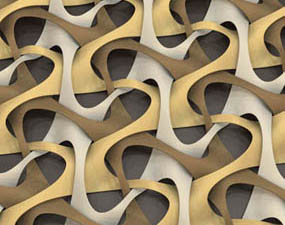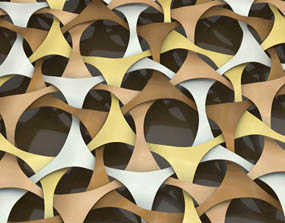6.1. Soap Film. In Figure 23 we have shown a loop weave with rhythm 2-2. This is an even-even rhythm and also here it appeared to be possible to create surfaces on the edges using the soap-film method. However in this case the complete set of loops of the weaving splits up in two subsets, creating two surfaces which are interwoven, as can be seen in Figure 28.



Figure 28a: Subset
Figure 28b: Soap film
Figure 28c: Surface

Figure 28d: Weaving


Figure 29: Square grid
Figure 30: Square grid


Figure 31: Hexagonal grid
Figure 32: Three layers


Figure 33: Two layers
Figure 34: Two layers


Figure 35: Three layers
Figure 36: Four layers